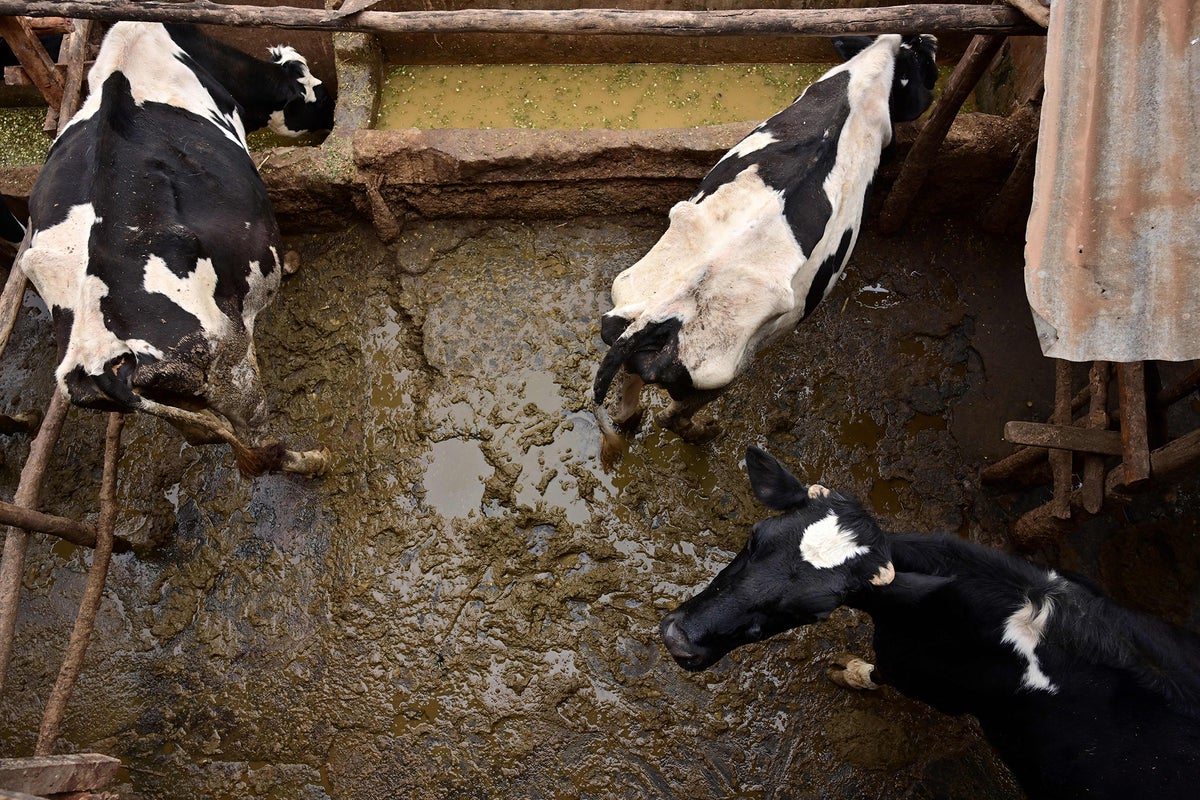
Multilateral Development Banks (MDBs) like the World Bank have continued to finance polluting industrial livestock programmes in developing countries despite promises to align their financing with the Paris Agreement, new research has found.
The paper, which has been shared exclusively with The Independent, represents the first time that a systemic investigation into how MDBs – in this case, the World Bank, International Finance Corporation, and African Development Bank – are financing the industrialisation of animal agriculture.
Academic Divya Narain has found that these three banks have collectively invested $1.03bn (£760bn) in 55 highly-polluting livestock projects between 2018 and 2024.
MDBs are financial institution backed by multiple countries to provide loans and support for social and economic progress in developing countries. The year 2018 is significant, as that was the year that these MDBs pledged to align their financial flows with the Paris Agreement, which is the landmark 2015 climate agreement which saw the countries of the world agree to limit global warming to less than 2C.
Tackling animal agriculture will be crucial to meeting global climate goals, with recent analysis from the UN Food and Agriculture Organisation finding that livestock currently contributes between 12 and 19.6 per cent of global greenhouse gas emissions.
The projects that Narain defines as “industrial” include those that encompass long-lived, high emissions infrastructure like slaughterhouses or meat-processing plants; certain supply chain investments like breeding facilities or packaging operations; efforts to increase access to export markets; and efforts to intensify commercial-scale production, such as animal feed production or confinement housing.
The particular concern with supporting such programmes in Sub-Saharan Africa is that countries will be “locked in” to a polluting development pathway, instead of one powered by low-emission technologies.
“This financing is not just an investment choice—it is shaping the trajectory of entire food systems, putting the Paris Agreement and global climate targets at risk,” Narain told The Independent.
“If left unchecked, this will put low-income countries—concentrated mostly in sub-Saharan Africa—on the same high-consumption, high-emission trajectories as today’s “surplus protein” nations, or the countries where per capita consumption of meat and dairy exceeds dietary recommendations, locking in decades of climate damage.”
Greenpeace Africa spokesperson said that the decision to fund industrial livestock like this “actively undermines climate goals”.
Pointing out that development banks have already invested in industrial crop farming for decades, but failed to lift countries out of poverty or tackle food insecurity, they said: “Greenpeace’s position is clear. Africa must shift to agro-ecological food systems that centre smallholder farmers, Indigenous peoples, women, and youth. Past industrial models have failed, deepening hunger and inequality.”
There are approximately 250 million smallholder farmers in Africa – or farmers with 10 hectares or less land – and they collectively supply around 80 per cent of Africa’s food.
Narain’s research finds that of the $1.03bn directed towards industrial agriculture, the World Bank contributed $650 million, the African Development Bank $313m, and the International Finance Corporation – which is part of the World Bank Group – contributed $63m.
Major projects included in the analysis include the World Bank’s Livestock and Agriculture Modernization Project (LAMP), which includes an abattoir and milk-processing centres, as well as the Africa Development Bank’s Programme to Strengthen Resilience to Food and Nutrition Insecurity in the Sahel, which also includes aspects seen as supporting industrial agriculture.
The role of MDBs in these projects “cannot be overstated”, says Narain, as they provide crucial early stage financing that can subsidise and de-risk private sector involvement, and unlock larger flows of capital.
The findings also come just a year after the World Bank said in a high-profile policy document that “low-income countries should focus on green and competitive growth and avoid building the high-emissions infrastructure that high-income countries must now replace.”
In response to the findings of this investigation, a spokesperson for the World Bank said that livestock is both a “lifeline for children’s nutrition and a driver of economic growth”, adding that it supports the livelihoods of 1.7bn poor people.
“The World Bank Group believes the key question is not whether to invest in livestock, but how to make it more sustainable,” the spokesperson said. “We disagree with the report’s portrayal of the Bank’s investments, which are quite diverse in size and scope.
“Our investments in livestock aim to make smallholder farmers more resilient by raising incomes, making their livelihoods more sustainable, and promote practices that reduce emission intensity.”
The African Development Bank was also approached for a comment.
This article was produced as part of The Independent’s Rethinking Global Aid project
